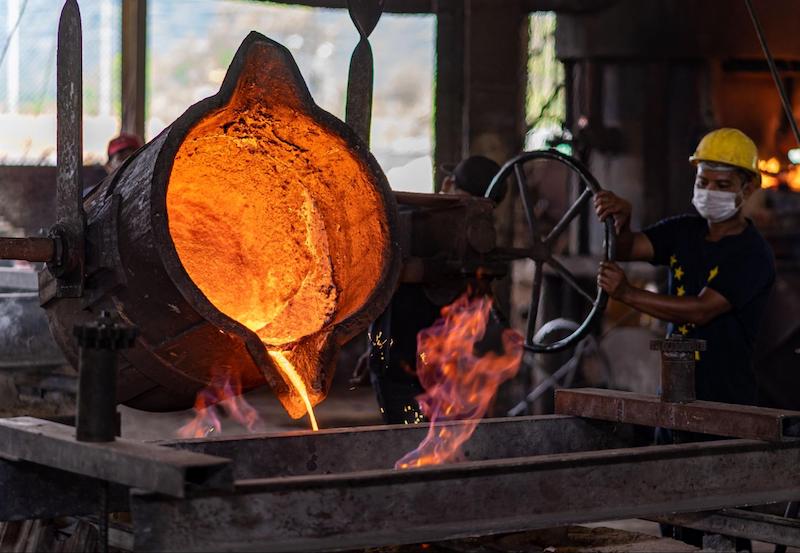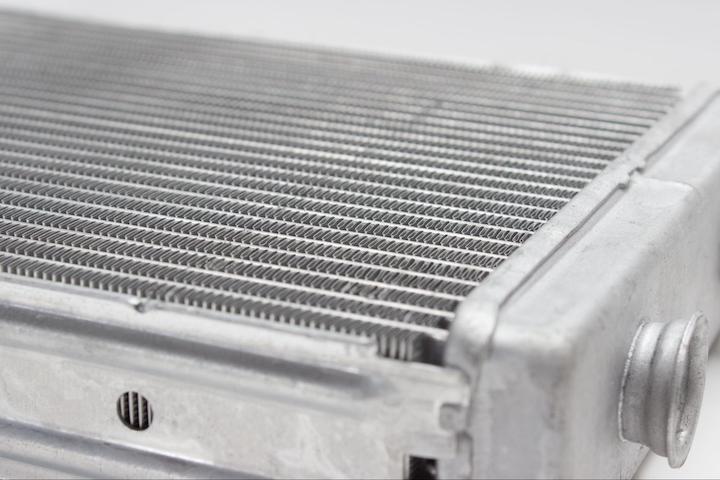How an Aluminum Foundry delivers consistent casting solutions for all industries
Understanding the Production Refine and Upkeep Practices for Aluminum Foundry Products
The production process for aluminum foundry items is complex and requires a detailed understanding of multiple phases. From the melting of aluminum at high temperatures to different casting techniques, each step plays an essential duty. Additionally, maintenance practices guarantee equipment remains efficient and products are devoid of problems. The intricacies of these procedures and their impact on item top quality raise essential questions about best practices and cutting-edge strategies in the sector.
Introduction of Light Weight Aluminum Shop Products
Light weight aluminum factory products are crucial elements in various industries, supplying a mix of lightweight strength and deterioration resistance. These items are typically used in fields such as auto, aerospace, and building and construction, where durability and performance are vital. Aluminum's reduced thickness makes it an optimal material for applications needing decreased weight without sacrificing architectural integrity. The convenience of light weight aluminum allows for the development of complex geometries, satisfying diverse style requirements.
Light weight aluminum foundry items can be customized with various alloys to boost certain homes, such as improved thermal conductivity or increased hardness. Their resistance to oxidation and deterioration assurances long life, making them suitable for both indoor and exterior applications. The combination of these attributes adds to the growing preference for light weight aluminum in modern-day production. As industries seek to maximize efficiency and sustainability, light weight aluminum shop products continue to play a critical duty in meeting these demands.
Melting Process: Transforming Aluminum
The melting process is an essential action in the manufacturing of light weight aluminum shop products, as it transforms strong aluminum into a molten state suitable for casting. This process commonly takes place in a furnace, where scrap aluminum or ingots are heated to temperatures around 660 degrees Celsius. The option of furnace-- be it electrical, gas, or induction-- impacts the effectiveness and price of melting.
Throughout melting, mindful factor to consider is offered to the elimination of contaminations, such as oxides and various other pollutants, which can detrimentally influence the top quality of the last item. Fluxes may be included in aid in this filtration process, boosting the fluidness of the liquified metal.
Additionally, temperature control is vital to ensure uniformity and prevent getting too hot, which can bring about oxidation. The melting procedure not just prepares aluminum for spreading however also plays a significant role in figuring out the honesty and properties of the final foundry products.
Casting Methods in Aluminum Shop
Different spreading techniques are used in light weight aluminum foundries to develop top quality parts, each suited to various applications and specifications. Amongst one of the most typically made use of methods are sand spreading, pass away casting, and investment spreading. Sand spreading uses a mixture of sand and binder to develop mold and mildews, permitting for big components and intricate shapes (aluminum metal casting). Die casting, defined by the high-pressure shot of liquified aluminum right into steel molds, produces repeatable and precise elements, perfect for automation. Investment spreading, or lost-wax spreading, involves creating a wax model that is coated in a ceramic shell, allowing complex layouts and great information. Each method has its benefits; sand casting is affordable for low-volume production, while die casting provides efficiency for high-volume runs. Investment casting is favored for components requiring exceptional accuracy and surface area coating. Picking the ideal strategy depends upon aspects such as manufacturing volume, part complexity, and material properties
Finishing Procedures for Light Weight Aluminum Elements
After casting methods have actually shaped the light weight aluminum elements, completing processes play a significant duty in enhancing their functionality and aesthetic charm. These procedures commonly consist of machining, surface therapy, and finish applications. Machining includes precise elimination of product to achieve wanted measurements and surface area quality. This is important for guaranteeing that components fit flawlessly right into their designated applications.
Surface area therapies, such as anodizing and polishing, are utilized to improve rust resistance and enhance aesthetic qualities. aluminum metal casting. Anodizing, specifically, offers a safety oxide layer, making the aluminum a lot more resilient and why not try this out aesthetically appealing

Maintenance Practices for Long Life
Implementing regular maintenance methods is necessary for making certain the durability of aluminum shop products. Regular evaluations should be conducted to identify damage, as very early discovery can stop expensive repair services and prolong the lifespan of parts. Cleaning devices and machinery regularly reduces the threat of contamination, which can negatively influence item high quality. Lubrication of moving parts is also important, as it reduces rubbing and wear, boosting functional efficiency.
Furthermore, the application of a preventive maintenance routine helps in methodically attending to possible issues prior to they rise (Casting Foundry). This includes checking for leakages, making certain appropriate placement, and calibrating machinery. Team training on appropriate handling and upkeep methods cultivates a culture of care, which is essential for maintaining item honesty. Documenting maintenance tasks provides valuable understandings right into efficiency trends, enabling for educated decision-making pertaining to future upkeep techniques.
High Quality Control and Testing in Aluminum Foundry Production
Quality control and screening are critical in aluminum factory manufacturing, as they assure that last products satisfy specified criteria and customer assumptions. This procedure begins with raw material assessment, guaranteeing that aluminum alloys abide with called for structures. Throughout the manufacturing cycle, in-process evaluations are carried out to keep track of parameters like material, temperature, and pressure circulation.
Numerous tests-- such as dimensional checks, aesthetic evaluations, and non-destructive testing-- are executed to recognize any type of flaws when spreading is complete. Mechanical buildings, consisting of tensile strength and hardness, are evaluated via standard screening techniques.
Adherence to sector standards, such as ISO and ASTM, is essential for making sure product high quality. Statistical procedure control methods are commonly utilized to assess production information and promote constant renovation. By implementing extensive high quality control steps, light weight aluminum factories can boost product reliability and lessen waste, ultimately resulting in better consumer satisfaction and functional performance.
Often Asked Questions
What Are the Ecological Impacts of Aluminum Foundry Workflow?
Aluminum foundry procedures can lead to considerable ecological influences, including air pollution from exhausts, water contamination from waste discharge, and energy usage adding to greenhouse gas exhausts, ultimately influencing regional environments and neighborhood wellness.
Exactly How Do Aluminum Costs Impact Shop Production Choices?
Light weight aluminum rates substantially affect shop production decisions; greater prices may lead to decreased outcome or increased effectiveness procedures, while reduced prices can encourage expanded production and financial investment in brand-new modern technologies to boost competitiveness and earnings.
What Precaution Are Essential in Light Weight Aluminum Foundries?
Vital safety procedures in aluminum factories include safety equipment, proper ventilation to decrease inhalation of fumes, routine tools maintenance, training on emergency procedures, and adherence to safety and security methods to stop crashes check my reference and injuries among employees.
Can Aluminum Be Recycled, and Exactly How Is It Processed?
Light weight aluminum can indeed be reused. The procedure entails collection, melting, and reforming the product right into new products, significantly lowering energy usage and ecological influence compared to primary light weight aluminum manufacturing while maintaining material quality.
What Prevail Flaws in Aluminum Spreading and Their Reasons?

The manufacturing process for aluminum shop products is intricate and requires a detailed understanding of multiple phases. Aluminum shop products are important elements in various sectors, supplying a blend of light-weight toughness and corrosion resistance. The melting process is a fundamental action in the manufacturing of aluminum shop items, as it changes solid light weight aluminum right into a liquified state suitable for casting. Implementing normal upkeep methods is crucial for making sure the longevity of aluminum foundry items. Quality control and screening are vital in light weight aluminum shop production, as they ensure that last products meet defined criteria and consumer expectations.